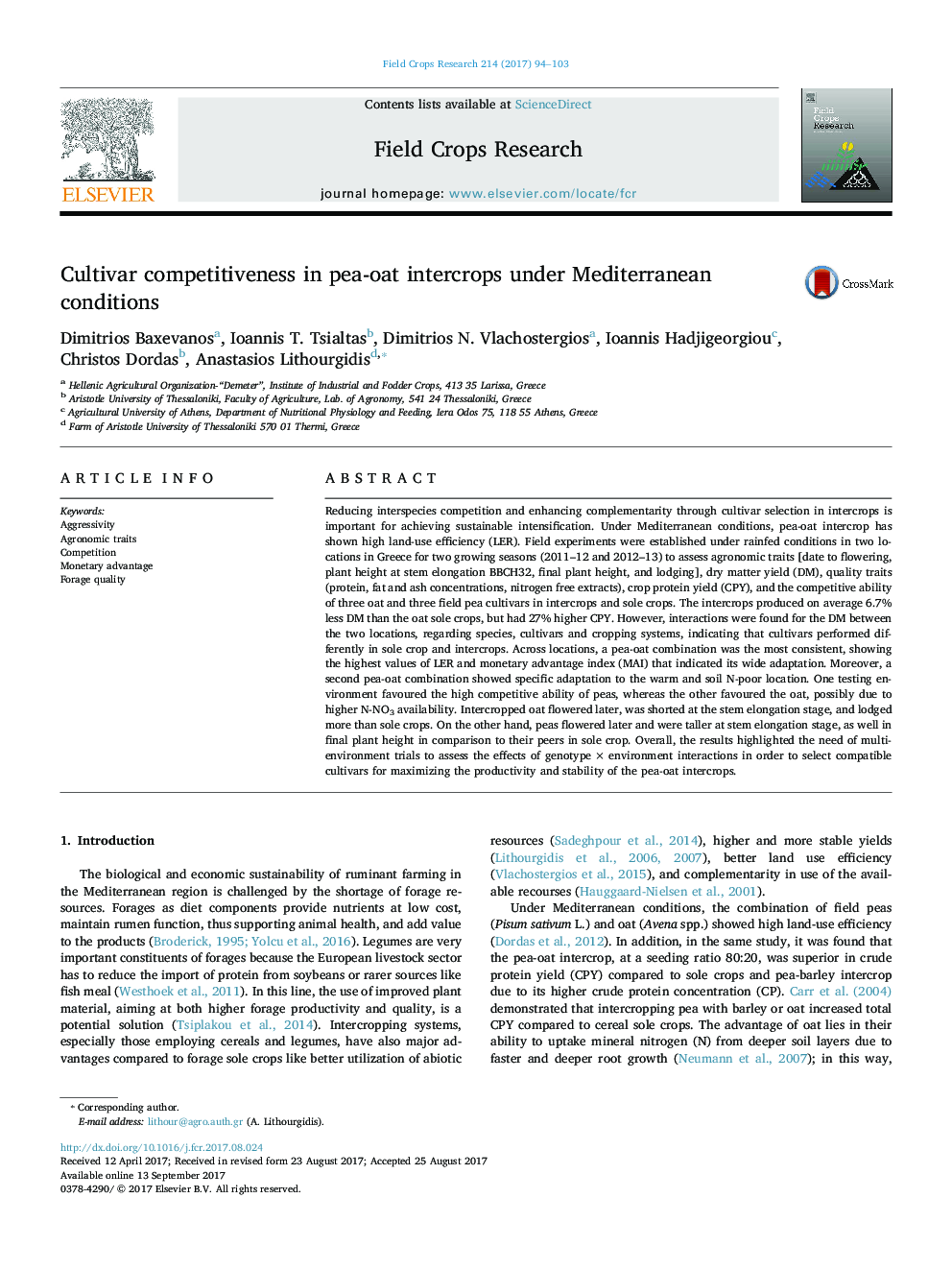| کد مقاله | کد نشریه | سال انتشار | مقاله انگلیسی | نسخه تمام متن |
|---|---|---|---|---|
| 5761374 | 1624649 | 2017 | 10 صفحه PDF | دانلود رایگان |
- Oat and pea cultivars performed differently in sole crop and intercrop.
- Specific intercrop combinations showed to be more consistent.
- At N deficient soil favored the competitive ability of peas.
- At N sufficient soil favored the competitive ability of oats.
Reducing interspecies competition and enhancing complementarity through cultivar selection in intercrops is important for achieving sustainable intensification. Under Mediterranean conditions, pea-oat intercrop has shown high land-use efficiency (LER). Field experiments were established under rainfed conditions in two locations in Greece for two growing seasons (2011-12 and 2012-13) to assess agronomic traits [date to flowering, plant height at stem elongation BBCH32, final plant height, and lodging], dry matter yield (DM), quality traits (protein, fat and ash concentrations, nitrogen free extracts), crop protein yield (CPY), and the competitive ability of three oat and three field pea cultivars in intercrops and sole crops. The intercrops produced on average 6.7% less DM than the oat sole crops, but had 27% higher CPY. However, interactions were found for the DM between the two locations, regarding species, cultivars and cropping systems, indicating that cultivars performed differently in sole crop and intercrops. Across locations, a pea-oat combination was the most consistent, showing the highest values of LER and monetary advantage index (MAI) that indicated its wide adaptation. Moreover, a second pea-oat combination showed specific adaptation to the warm and soil N-poor location. One testing environment favoured the high competitive ability of peas, whereas the other favoured the oat, possibly due to higher N-NO3 availability. Intercropped oat flowered later, was shorted at the stem elongation stage, and lodged more than sole crops. On the other hand, peas flowered later and were taller at stem elongation stage, as well in final plant height in comparison to their peers in sole crop. Overall, the results highlighted the need of multi-environment trials to assess the effects of genotype Ã environment interactions in order to select compatible cultivars for maximizing the productivity and stability of the pea-oat intercrops.
Journal: Field Crops Research - Volume 214, December 2017, Pages 94-103
